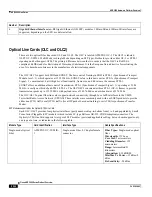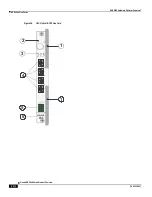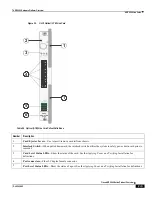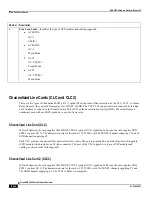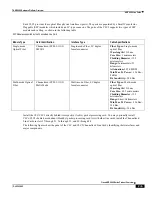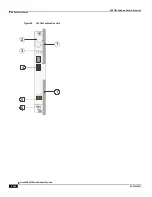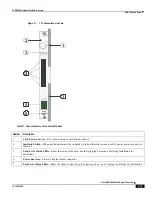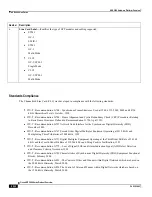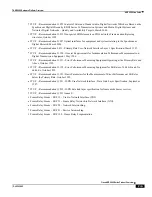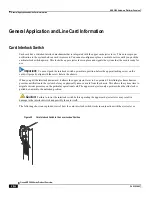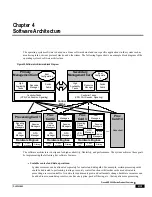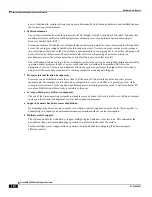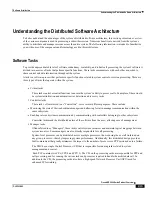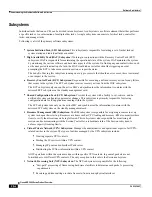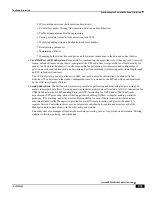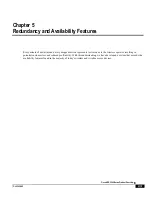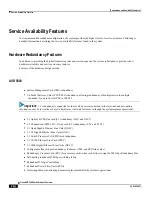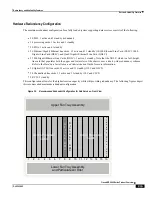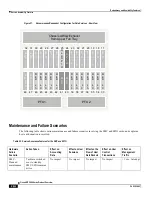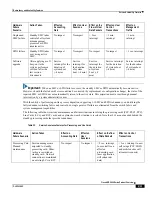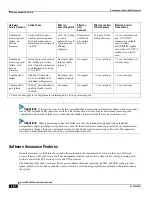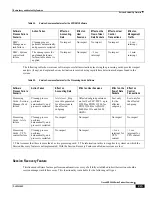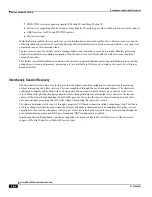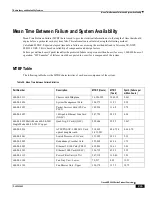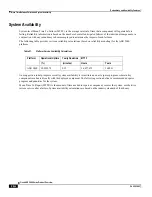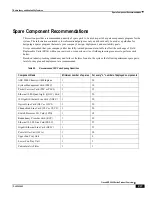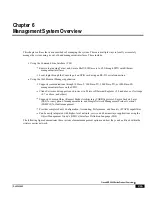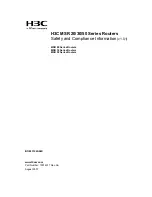
Software Architecture
▀ Understanding the Distributed Software Architecture
▄ Cisco ASR 5000 Series Product Overview
OL-22938-02
Subsystems
Individual tasks that run on CPs can be divided into subsystems. A subsystem is a software element that either performs
a specific task or is a culmination of multiple other tasks. A single subsystem can consist of critical tasks, controller
tasks, and manager tasks.
Following is a list of the primary software subsystems:
System Initiation Task (SIT) Subsystem:
This subsystem is responsible for starting a set of initial tasks at
system startup and individual tasks as needed.
High Availability Task (HAT) Subsystem:
Working in conjunction with the Recovery Control Task (RCT)
subsystem, HAT is responsible for maintaining the operational state of the system. HAT maintains the system
by monitoring the various software and hardware aspects of the system. On finding any unusual activities, such
as the unexpected termination of a task, the HAT would take a suitable action like triggering an event
prompting the RCT to take some corrective action or report the status.
The benefit of having this subsystem running on every processor is that should an error occur, there is minimal
or no impact to the service.
Recovery Control Task (RCT) Subsystem:
Responsible for executing a defined recovery action for any failure
that occurs in the system. The RCT subsystem receives recovery actions from the HAT subsystem.
The RCT subsystem only runs on the active SMC and synchronizes the information it contains with the
mirrored RCT subsystem on the standby management card.
Shared Configuration Task (SCT) Subsystem:
Provides the system with a facility to set, retrieve, and be
notified of system configuration parameter changes. This subsystem is primarily responsible for storing
configuration data for the applications running within the system.
The SCT subsystem runs only on the activeSMC and synchronizes the information it contains with the
mirrored SCT subsystem on the standby management card.
Resource Management (RM) Subsystem:
The RM subsystem is responsible for assigning resources to every
system task upon their start-up. Resources are items such as CPU loading and memory. RM also monitors these
items to verify the allocations are being followed. This subsystem is also responsible for monitoring all
sessions and communicating with the Session Controller, a subordinate task of the Session subsystem, to
enforce capacity licensing limits.
Virtual Private Network (VPN) Subsystem:
Manages the administrative and operational aspects of all VPN-
related entities in the system. The types of entities managed by the VPN subsystem include:
Creating separate VPN contexts
Starting the IP services within a VPN context
Managing IP pools and subscriber IP addresses
Distributing the IP flow information within a VPN context
All IP operations within the system are done within specific VPN contexts. In general, packets are not
forwarded across different VPN contexts. The only exception to this rule is the Session subsystem.
Network Processing Unit (NPU) Subsystem:
The NPU subsystem is responsible for the following:
―Fast-path‖ processing of frames using hardware classifiers to determine each packet‘s processing
requirements
Receiving and transmitting user data frames to/from various physical interfaces
Summary of Contents for ASR 5000 Series
Page 1: ......
Page 26: ......
Page 48: ...New In Release 10 0 SCM Features Cisco ASR 5000 Series Product Overview OL 22938 02 ...
Page 50: ......
Page 58: ......
Page 68: ......
Page 126: ......
Page 138: ......
Page 146: ......
Page 218: ......
Page 236: ......
Page 356: ......
Page 374: ......
Page 422: ......
Page 496: ......
Page 572: ......
Page 654: ......
Page 700: ......
Page 726: ......
Page 784: ......
Page 816: ......
Page 844: ......
Page 906: ......
Page 926: ......
Page 942: ......
Page 943: ...Cisco ASR 5000 Series Product Overview OL 22938 02 Chapter 30 Technical Specifications ...
Page 966: ......
Page 972: ......

